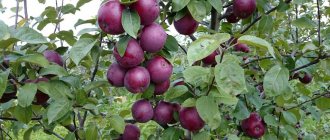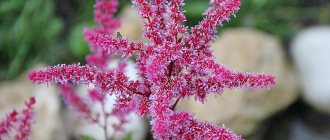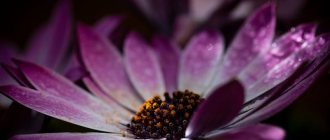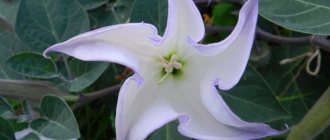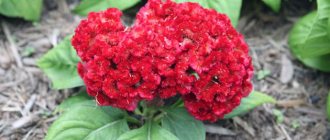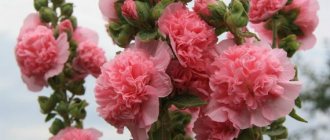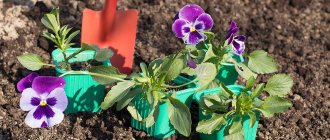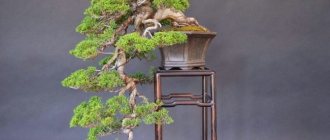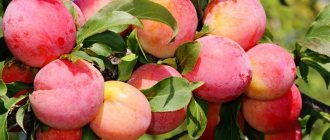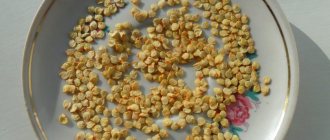Coniferous bonsai species
Almost any type of coniferous tree can be grown as a bonsai.
Within the cedar, juniper and pine families, there are many subspecies and varieties to choose from. Thuja and spruce bonsai are some of the most beautiful and difficult to grow. Some types of bonsai are more complex than others. This is primarily due to the fact that these are winter species and bloom all year round. Coniferous bonsai are the most difficult because the growth pattern of their needles is very different from that of other conifers. This is primarily due to the fact that these are winter species and bloom all year round. They are beautiful to look at, but their structure must be carefully examined before training or pruning begins.
Spruce bonsai
There are several types of spruce bonsai:
They are difficult to grow as bonsai at home and require extra effort. Its small needles are prized by experienced enthusiasts.
Thuja bonsai
When shaping with your own hands, the driftwood style is popular for this "cedar" because the wood is relatively soft, beautifully grained, and easy to carve.
The best bonsai trees are those that are grown in a natural, flowing form. Study the form of a mature example of the species, noting its structure, the number of branches and the strength of its foliage. Most conifers have a pyramidal, conical shape.
Of the endless number of styles, bonsai, thuja and barely fit better:
- Formal and informal vertical styles.
- Grow in a dramatic slope or cascade down the sides of the pot like a waterfall.
Regardless of which style you choose, remember that it will take several months to recover after trimming. This initial period of planning and study is extremely important.
What is garden bonsai
A garden bonsai differs from a miniature tree grown in a clay bowl in its size and in that it grows in open ground all year round. It will take at least five years to grow a bonsai tree, such as a pine tree. And the price for a good copy will be quite decent. And the most interesting thing is that anyone who finds it interesting can create these miracle trees on their own plot. And you don’t have to pay a lot of money for unique, expensive seedlings. Linden, spruce, maple, oak, hazel, juniper and many other young trees can be excellent material for bonsai on your site. Here's another option. Look around you while at your dacha. Maybe there are trees or bushes that you are already tired of and have been planning to remove them for a long time. What if you look from the other side and turn the boring old into a beautiful new? No investment. Only imagination, your hands and an ordinary country tool.
Formation of spruce and thuja
Pruning is the most difficult step in growing bonsai. It's easy to make the mistake of doing too much rather than too little. A conservative approach is often the most successful.
Adhere to the following rules when forming spruce and thuja:
- Aggressive pruning of branches should be done in late fall and early winter, when the tree is dormant.
- Leave a few inches when cutting branches close to the trunk so that new growth can be stimulated by the interior areas of the tree.
- A month later, trim the candles with sharp pruning shears to control vertical growth.
- Removing too many branches or too many leaves can damage the tree's vitality.
- The tendency to pinch buds at the ends of branches can result in an undesirable "poodle" appearance.
Wire shaping is a technique that directs the wood's energy horizontally or downward, creating a dramatic effect. Attach one end of the wire to the pot and wrap the other end around the branch or trunk with enough tension to move the branch slightly. Increase the tension over time to achieve the desired growth angle.
Thuja transplant
The soil for a coniferous bonsai should be 70 percent organic material and 30 percent granular, allowing it to drain well while providing adequate nutrients. Powdered bonsai fertilizers can be added to the soil for thujas and spruces.
Spring is replanting season. Watch for the appearance of new buds. After removing the tree from the old pot, examine the roots for signs of coiling or tangling. If so, carefully trim the roots to free them and encourage new growth. After trimming the root, fill a larger pot with soil and move the tree.
Replant young conifers annually to keep the soil fresh and nutrient-dense. For older trees, replanting after a year is sufficient. As the tree grows, use slightly larger pots to accommodate the growing root system.
Caring for coniferous bonsai in winter
Like most evergreens, spruce and arborvitae bonsais are winter-hardy and require periods of cold weather. Bonsai are no exception, so don't try to grow them indoors.
Conifers prefer full sun to partial shade, with plenty of water and humidity during the spring, summer and fall. If at the end of the thuja growing season there are several yellowed or dead needles, remove them and clean the dead needles from the surface of the soil.
Features and types
Bonsai can be grown from any type of tree, but coniferous trees look especially beautiful. The best species for creating coniferous bonsai are spruce, thuja, pine and juniper. There are more than 10 main styles of tree formation, each of which has its own meaning. But no matter how beautiful a bonsai made from coniferous trees may be, it is difficult to grow and care for it, so it is not recommended for a beginner to create such a work of art.
These species are used to create spruce bonsai.
- Common spruce. A cone-shaped tree often used as a New Year's decoration at home.
- Blue spruce (gray or Colorado). Known for the bluish-green or blue color of its needles, spruce has a narrow conical shape when young, and an adult tree takes on a cylindrical appearance.
- Spruce Glauka Konika. Miniature spruce is famous for its beautiful conical crown shape and thick, small needles.
- Canadian spruce. The beautiful blue-green above and blue-white below is the ancestor of the Glauka Konika spruce.
Reproduction at home
Reproduction can occur in two ways: using seeds and cuttings.
Using seeds
The seeds are contained in pine cones.
Seeds are prepared as follows:
- Placed in moisture;
- Placed in a container filled with sand and planting material.
- Sprinkle with wet sand.
- The container is covered with polyethylene.
- The material for sowing is left in the dark and cool for three months.
- After time has passed, the seeds are removed and kept in warm water for two days.
- Planting in the ground is in progress.
The seeds should be planted in pots with peat; the components form a substrate for seed growth. If you can’t find peat, it’s better to buy soil for cacti.
Then the following sequence is followed:
- Soil is poured into the container ready for planting, but three centimeters are left to the edge.
- Turf is prepared for the growth of bonsai. It is poured above the main soil.
- Ready seeds are placed on the layer. They are covered with sand. Sand - four centimeters.
- All contents are compacted. The sand is watered with water no more than 80 ml.
- The pot is covered with food film or polyethylene.
- The pot is placed in a dark place where it is no warmer than 15 degrees.
- Sometimes the film is removed and the soil is ventilated. You can check how moist the soil is.
- When the first sprouts appear, the film is pierced in several places so that oxygen reaches the sprouts. After germination, it is removed and the pot is placed in the sun.
- After three months, the root must be cut off by two-thirds.
- When the sprout reaches 10 cm, it must be dug up and transplanted into its own pot.
Young plants should not be exposed to open sun. Direct rays will destroy them.
Using cuttings
First, the container is prepared. Drainage is poured. The drainage layer may consist of gravel or lava. Substrate is added. cuttings are cut at an angle of 45 degrees. Then they are stuck into the substrate and planted two centimeters below the top layer. Then the cuttings are carefully and thoroughly watered. Humidity must be maintained. Soon the cuttings will grow.
So, having a bonsai at home is a good idea. Above, instructions were given for proper care of pine bonsai. If you wish, you can create a miniature Japanese world at home with its closeness to nature and natural elements. Creating a work of art from a plant can be done in a house or apartment with the right approach to the matter. The work is painstaking, but not difficult. Constant care of pine is recommended. Several types of pines are presented in the article. They appeared in different parts of the world, but they are all suitable for bonsai. It is important to choose a place for planting and growing. Pine loves the sun, but does not like direct rays. Aspects of proper cultivation must be immediately remembered.
Making a spruce bonsai
You can grow a dwarf tree from a Norway spruce seedling taken from the wild or purchased from specialized nurseries. But finding the right species of the right age is very difficult, so bonsai masters create their compositions from trees grown from seeds. Before planting, the seeds undergo special treatment, which disinfects and accelerates the germination process. To do this, you need to place the spruce seeds for 24 hours in a weak solution of potassium permanganate. Soak the next day in clean water.
Plant the seeds in a peat-sand mixture with the addition of pine humus to a depth of 15 mm, moisten well and cover with film. The distance between the sown seeds should be at least 4 cm. The optimal temperature for germination does not exceed 20°C. In a couple of weeks, the first shoots may appear. When all the seeds have sprouted, select and leave the strongest seedlings at a distance of at least 75 mm from each other.
It is not recommended to leave only one sprout, as spruce has a peculiarity: by the third year of life, 50% of the seedlings die.
When caring for seedlings, you need to:
- maintain temperatures in the range of 13-15°C;
- Replace watering by spraying seedlings with water 2 times a day;
- keep away from direct sunlight.
Tender spruce seedlings are not resistant to diseases, especially root rot, so it is important to treat the plant with fungicides. When the plant reaches a height of 0.1 m, the crown begins to form. The shape of an adult plant is planned in advance and corresponds to the wishes of the author of the idea. To form a tree, pinching the growing points, trimming and pulling back the branches using copper or aluminum wire is used, setting the direction of growth.
A year later, the seedlings are transplanted for the first time. It is best to transplant in early spring, before active sap flow begins. Young seedlings are carefully removed from the soil, trying not to damage the roots, damaged ones are removed and transplanted into separate pots. It is advisable to add soil from under coniferous trees to the soil for replanting. Water the seedlings once a week in the summer. Mineral fertilizing is applied once a year in the spring.
red leaf nut
Along with jasmine, it has long conquered all garden plots. If you have an old bush, you can do the same as with the jasmine bush. But the result is more interesting if you plant three or four identical nut seedlings nearby. The planting site must be chosen so that the bonsai looks harmonious. It is better when there is free space between the trees. As they grow, the nut stems must be twisted together. Side branches must be removed until the plants reach a height of one and a half meters. Do not let the bonsai grow higher, just form side branches in width using soft wire and pruning shears. You can choose the diameter of the bowl at your discretion. Walnut, like jasmine, produces new shoots from the root system. They must be removed in a timely manner, or a layer of mulch or beautiful stones should be placed around the trunk. Many, looking at a one and a half meter nut bonsai, are surprised at the bright, rich color of its leaves. The answer is simple - choose a sunny place for planting and do pruning in a timely manner. Young walnut leaves are always brightly colored. By the way, trees can be pruned to form a bonsai at any time of the year. And it’s better to do this on time, not allowing unnecessary branches to grow. Below, in the photo, is a young walnut with pale leaves, growing in the shade, which has not been pruned.
Garden bonsai from spirea
From ordinary spirea, which many know as a border ornamental shrub, you can create whatever you want.
It grows well, is not afraid of pruning shears, and is very hardy. During flowering, these balls turn white and amaze people with their unusualness and beauty. To create a spirea bonsai, plant several shrub seedlings nearby. Their tables can be braided, or, when they grow up, simply tied with soft wire. As side branches appear, use pruning shears to form any shapes.
Garden bonsai from ordinary spruce
Let's go to the nearby forest for spruce bonsai, and not to the nursery. Growing such an amazing bonsai from an ordinary Christmas tree is simple and interesting. Plant a Christmas tree half a meter high in a spacious place. Give her a couple of years to grow up. And take the pruning shears. Everything unnecessary is gone. Spruce pruning should be done early in spring or late in autumn. Do the same with bonsai made from ordinary pine. You can shape its branches by copying a classic bonsai, creating more fanciful shapes.
More imagination and experimentation
Unique bonsai seedlings, already prepared by nature itself, can be found among the rocks and stones.
In clearings between abandoned trunks and on stumps, sometimes such twisted shoots appear that you are amazed and rejoice at the same time. An amazing combination of different colored leaves or flowers of plants of the same species can be successfully used in bonsai. It is enough just to plant them next to each other and intertwine them. And when they grow up, use pruning to form something funny and unexpectedly beautiful. The main thing is not to be afraid. You will definitely succeed. And no one will have a second one, such a garden bonsai.
Spruce is quite difficult to grow in the bonsai style, since it is necessary to constantly perform a lot of small work on care and shaping. It is quite easy to shape the spruce trunk due to its flexibility.
Some species of Norway Spruce (Picea abies) – “Nidiformis”, “Pumila glass” and Gray Spruce (Picea glauca) – “Conica” are used as bonsai.
The soil:
Spruce is tolerant of soil poor in nutrients. Use a clay soil to peat ratio.
Lighting:
Light-loving plant. Grow outdoors all year round.
Temperature:
Grow at outdoor temperatures, but should be protected from extreme cold in winter.
Watering:
In spring and summer, water the spruce regularly; in winter, do not let the soil dry out.
Feeding:
Feed the spruce throughout the entire period of active growth, from early spring to autumn.
Formation:
Unlike other coniferous plants, spruce is pinched when the young shoots grow a little. Trim old branches in January and February, during this period the release of resin is minimal. When applying the wire, make sure that it does not grow into the bark.
Purchasing a plant:
You can take a young plant from nature, but rooting occurs very rarely, so purchase spruce from nurseries or specialized stores.
Pests and diseases:
Spruce is susceptible to all the diseases of coniferous plants. If the needles turn yellow, it may be affected by spruce-fir hermes. Pests are usually located on the underside of the needles and resemble cotton wool; to destroy them, treat the spruce with a solution of Antio or Rogor.
Colloidal sulfur or Bordeaux mixture is used to treat branches against rust (yellowing of needles, orange spots, swelling on branches). If the disease does not go away, it is advisable to prune the affected branches, or, as a last resort, uproot the plant to stop the spread of the disease.
For the Japanese, growing bonsai is a whole philosophy that combines the spiritual and physical sides of the process. For an ordinary person to achieve success, it is necessary to treat this matter with love and patience. You need to have some knowledge on how to make a pine bonsai. Growing a bonsai on your own will require a lot of time and labor. As a result, an amazing plant will give joy and beauty for many years.
A traditional bonsai must meet the following characteristics:
- Trunk. It should be powerful and strong, with a pronounced base and protruding roots.
- Branches. There are few branches, their lines should be harmonious and clearly visible. The trunk and branches of a bonsai give the tree that unique, whimsical image.
- Form. A Japanese pine bonsai must conform to one of 15 classifications. To help a beginner or an experienced gardener, drawings, diagrams, photographs or your own fantasies and wishes.
- A miniature pine should look like a tree growing in natural conditions.
The main task when creating a bonsai is to achieve slow growth of the plant. This is achieved in several ways: frequent pruning of tree roots and shoots, artificial growth inhibition, the use of special types of soil, and special methods of caring for and watering trees.
Norway spruce bonsai
You can even grow a spruce tree from seeds. Even a beginner can cope with this task. It is necessary to place them in a weak solution of potassium permanganate (3 crystals per 1 liter of water) for 24 hours. After this, the water is drained, and the seeds are sent for another day in a container with ordinary water. Now you need to prepare a container with sand, make indentations up to 2 cm in it and place the seeds there.
Water the soil regularly and wait for the first shoots to appear. They can be planted at a distance of no closer than 4 cm from each other. The container with seeds is placed for 60–65 days in a cool place (this can be a garage, cellar or balcony). After the specified period, the container is brought into the house and placed near the window so that future plants receive enough light. Within three weeks, small seedlings should appear.
When they reach several centimeters in height, it is necessary to leave 2-4 of the strongest plants (by about the third year, half of the seedlings die). For the first 2 years, the spruce grows in the same container under conditions of timely watering and regular application of fertilizers. After this, it is transplanted into a special bonsai and the crown is pinched to stop the growth of the tree.
Video: forming a bonsai from common spruce
Spruce
The modern art of growing bonsai has many directions and styles. But they all adhere to the general rule regarding crown formation:
- a coniferous tree should have branches with small and lush needles;
- the choice should be in favor of a tree with a cone-shaped crown or the crown should be divided into tiers.
Let's consider the question of how to grow a Norway spruce bonsai or an elite blue spruce bonsai. This is not easy to do; not every beginner will be able to cope, especially if you start by planting seeds. They are placed in a light solution of potassium permanganate for a day, and then in water for another day. Place the soaked seed into a container with prepared sand to a depth of 1–2 cm and leave it in a cold place (for example, on a balcony or in a garage) for two months.
With the beginning of spring, the container is transferred to home conditions, placed closer to the light source (window sill) and watered. After three weeks, small seedling fir trees appear and when they reach more than 10 centimeters, you can begin to form a bonsai from Norway spruce. For 2–3 years, the Christmas tree grows with watering in the summer (once a week). In early spring, mineral fertilizers are applied. After this period, the seedling can finally be transplanted into a special pot - a bonsai pot.
Pinching the top is necessary in order to stop growth. Pruning and trimming will help give the plant the desired shape. Pruning can be done as needed, and the shape of the crown will be dictated by your imagination.
Treat the cut areas with garden varnish. The best place for a young plant is a balcony, veranda, loggia. There is plenty of natural light and the sun's rays often shine through.
Bonsai care
When the seedling is transplanted into a pot, it is necessary to continue to care for it by regularly trimming the crown. This procedure is repeated throughout the life of the tree, since a new layer appears on the spruce every year. Experts advise not only getting rid of excess branches that grow in the wrong direction, but also regularly pulling back soft young shoots (they are quite pliable, so they are easy to give the desired shape). To artificially age a tree, you can additionally peel off the bark.
Every year in the spring, it is necessary to remove dry shoots from the bonsai, giving it a neat and well-groomed appearance. To prevent infection from developing where thick branches are cut, they should be treated with a solution of garden varnish. To prepare it, you need to mix rosin, paraffin and vegetable oil in a ratio of 1.5:2:1. The mixture should be boiled over low heat for half an hour, cooled and used if necessary, applying generously to cut areas.
Watering spruce bonsai is carried out only as needed (when the soil in the pot begins to dry out). It is worth considering that the vessel for growing a mini-tree contains a relatively small amount of soil, so for normal development of the spruce it needs to be fertilized regularly. An excellent option would be a special feed for bonsai called “Novofert” (5 g per 2.5 liters of water). It is very important that the plant receives enough light daily.
The Christmas tree is not a tree that tolerates heat well (partial shade is important for it), so you should take care of diffused sunlight for most of the day. Proper care will help preserve the unique color of the spruce and achieve density of the branches. In winter, it is extremely important to create conditions for the tree that are as close to natural as possible. To do this, move the flowerpot with the spruce outside or onto the balcony. The plant goes dormant and if the temperature is too high, it will simply dry out.
How to make a bonsai with your own hands (video)
I decorate offices and living spaces with miniature bonsai compositions. With proper care and timely pruning, a bonsai is formed in 2-3 years. After this, the gardener must carefully monitor the composition, maintaining the splendor of the crown and the shape of the branches. For these purposes, wire or thread is used. Pruning is carried out no more than once every 4-5 months. The specific period depends on the type of tree.
The coniferous plant familiar to all of us can be grown in a “dwarf” version. The result is a wonderful bonsai - a miniature copy of a fairy-tale spruce with a curved, expressive trunk. In order for the plant to please you for many years, you need to follow the rules of care : water it correctly, feed the Christmas tree, and also properly organize wintering - on the balcony or in the garden. The easiest way is to grow a coniferous beauty in a garden plot, and realize its unusual shape with the help of pruning.
